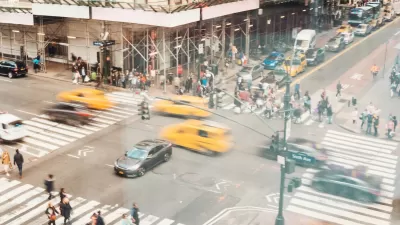The Tesla Cybertruck was recalled seven times last year.

An analysis from FuelArc calls out Tesla’s Cybertruck for having a higher fatality rate than the infamous Ford Pinto, reports Julianne McShane in Mother Jones. Since they were released a year ago, Cybertrucks have a fatality rate of 14.5 per 100,000 units; the Pinto had a fatality rate 17 times lower, at 0.85 fatalities per 100,000 units over its nine years of existence.
The authors acknowledge the limits of their analysis, noting that Tesla will not publicly release the actual number of Cybertrucks sold, and that the analysis includes the self-inflicted death of a soldier in a Cybertruck in Las Vegas last month. (Discounting that death would still give Cybertrucks a fatality rate of 11.6 per 100,000 units — 13 time that of the Pinto.)
However, the analysis makes a point: when Ford Pintos were involved in fatal crashes, the NHTSA investigated, and Ford recalled 1.5 million vehicles before ending production in 1980. Meanwhile, the Cybertruck “has reportedly not been crash-tested by the NHTSA or the nonprofit Insurance Institute for Highway Safety, nor has Tesla released its own safety data on the Cybertruck.” The vehicle was also recalled seven times last year, “including once over a trapped accelerator pedal that could increase the risk of a crash, estimated to affect more than 3,800 units, according to the NHTSA.”
FULL STORY: Report: Elon’s Cybertrucks Are Deadlier Than Infamous Ford Pintos

Planetizen Federal Action Tracker
A weekly monitor of how Trump’s orders and actions are impacting planners and planning in America.

Maui's Vacation Rental Debate Turns Ugly
Verbal attacks, misinformation campaigns and fistfights plague a high-stakes debate to convert thousands of vacation rentals into long-term housing.

San Francisco Suspends Traffic Calming Amidst Record Deaths
Citing “a challenging fiscal landscape,” the city will cease the program on the heels of 42 traffic deaths, including 24 pedestrians.

Defunct Pittsburgh Power Plant to Become Residential Tower
A decommissioned steam heat plant will be redeveloped into almost 100 affordable housing units.

Trump Prompts Restructuring of Transportation Research Board in “Unprecedented Overreach”
The TRB has eliminated more than half of its committees including those focused on climate, equity, and cities.

Amtrak Rolls Out New Orleans to Alabama “Mardi Gras” Train
The new service will operate morning and evening departures between Mobile and New Orleans.
Urban Design for Planners 1: Software Tools
This six-course series explores essential urban design concepts using open source software and equips planners with the tools they need to participate fully in the urban design process.
Planning for Universal Design
Learn the tools for implementing Universal Design in planning regulations.
Heyer Gruel & Associates PA
JM Goldson LLC
Custer County Colorado
City of Camden Redevelopment Agency
City of Astoria
Transportation Research & Education Center (TREC) at Portland State University
Jefferson Parish Government
Camden Redevelopment Agency
City of Claremont





























